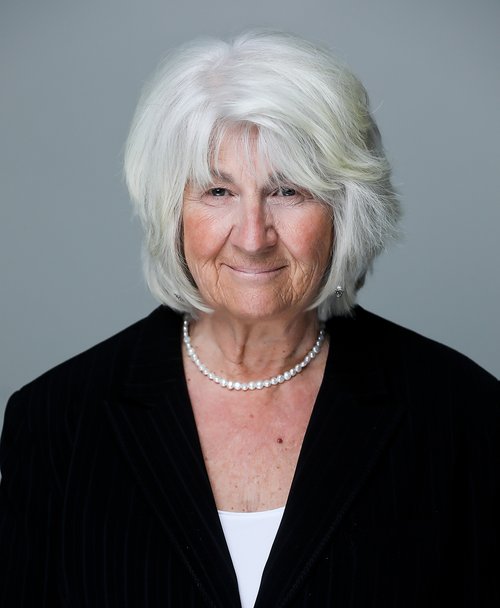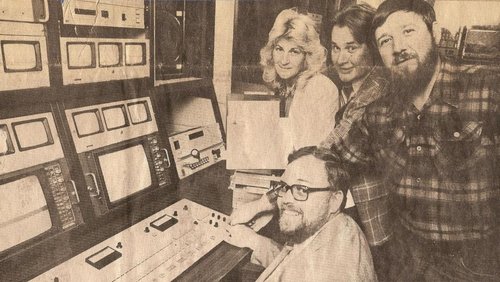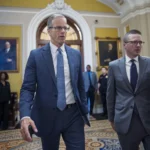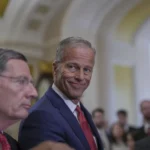FRIDAY FOCUS: Wyoming Media Pioneer Ruby Calvert Develops Heartland Programming
Former WyomingPBS general manager and Corporation for Public Broadcasting vice chair reflects on the state of Wyoming journalism
- Published In: Other News & Features
- Last Updated: Jan 20, 2023

By Jacob Gardenswartz
Special to the Wyoming Truth
In media companies’ swanky board rooms in New York, Washington or Los Angeles, it’s rare to find representation from Wyoming. Ruby Calvert is an important exception.
The longtime general manager of WyomingPBS was recently confirmed by the U.S. Senate to serve a second term on the Corporation for Public Broadcasting (CBP) board, the quasi-governmental agency responsible for overseeing federal investments in public broadcasting.

As CPB’s vice chair, Calvert, a Rollins native and University of Wyoming graduate, has focused on diversifying public TV portfolios — leading initiatives to develop more programming from “heartland” states like Wyoming.
The Wyoming Truth recently caught up with Calvert, 75, to discuss her historic career and CPB work. What follows are excerpts from the interview.
What’s your background, and how did you become involved in Wyoming media?
Calvert: I always thought I wanted to be a school teacher. And so I majored in English and secondary education. And as I went and did my student teaching, I realized that really was not my favorite thing to do…. I didn’t want to deal with all the discipline issues, and I just wanted students to be really excited about reading and writing. And they weren’t…
[In 1981,] I saw an article in the newspaper about Central Wyoming College looking at building a public television station. I just couldn’t believe it, because I had always, since I saw the very first Sesame Street in ’69, thought, “There’s nothing better than public television.” So I went up and I talked to the gentleman who was basically writing the grants for the station. And he said, “Oh, gee, you’re an English major. Wow, I could really use some help.” So I basically helped Jerry Garber, who was the first general manager for the station, . . . write some grants and organized some telecommunications conferences for people around the state…
We didn’t actually start adding employees until about 1999, 2000, when the state of Wyoming started developing a surplus for the budget. I think the high point in number of employees that we ever had was 23. And that was when I was there in 2006/2007 and became the general manager. So it was just a long, slow period of growth. But I think Wyoming public television, Wyoming PBS has really made a difference in the state.
In layman’s terms, what does the CPB do, and what is your role as the vice chair on the board?
Calvert: The CPB was formed in the Public Television Act of 1967. It came about because of, you know, the common words that everybody hears — the “vast wasteland of television” — because the Carnegie Corporation and Ford Foundation thought that television should be more. I’m so glad they did, because it really grew from being more than soaps in the daytime and sitcoms at night to real educational, informational kinds of programming. And so the Public Broadcasting Act in ’67 actually formed CPB to act as the quasi-corporation, to accept money from Congress and provide a firewall so the Congress wouldn’t really have any conditions or strings tied to the funding.
CPB is awarded a Congressional allocation each year. And then that money goes in different directions and after we receive it… [After minor administrative costs] 75% of that money is given to public television stations, 25% is given to public radio stations… We also use that to target certain needs that we see. And that might be journalism. It might be— a couple of years ago we started an editorial integrity project, which was designed because a lot of small stations don’t have producers who’ve really been trained to be objective and fair and balanced…
It’s really exciting. I mean, I just think there’s nothing better than public media, public radio and public television. I listen to public radio all the time… [But] when you look at the national schedule, it’s so controlled by WGBH in Boston, WNET in New York. They’re the two largest producing stations. But at one point, there were also a lot of programs coming out of KCET in Los Angeles, out of WTTW in Chicago, out of even KCTS and Seattle. We really had bicoastal programming. And, you know, the heartland was just kind of overlooked…
So my goal is to really find some ways to develop a constant stream of programming from the heartland to appear on national public television … I’m in my fourth year on the CPB board, and good things take a while to put together. But we do have an initiative now called “Coming Home” to highlight rural programming. And so it’s a good first step.
I was one of the first people to ever be appointed on the CPB board from a small public television station. And I think they were looking for representatives and voices from that sector of our service. So I’m hoping I’m living up to that.

There have been several political debates in the past over funding for public media. How does your work interact with domestic politics?
Calvert: When we saw Big Bird on the chopping block… I think there were several amendments on the floor to completely defund the Corporation for Public Broadcasting. And one thing people don’t understand is how important the grants are to public television stations and public radio stations… In Wyoming, there are only 500,000 people there. And we were lucky to be able to raise even $100,000 from our constituents….
So people don’t understand that just defunding CPB doesn’t mean that public television nationwide can stand on its own — local stations rely so much on that money… I just can’t stress enough how important the funding is to local, small and medium market stations.
We’ve seen some critiques from conservatives alleging that public media has a liberal bias. Recently, then-candidate Harriet Hageman opted not to participate in the WyomingPBS general election debate. What’s your response to such critiques and Hageman’s decision?
Calvert: I think public television has received fewer of those insinuations of bias… [In 2008] we did a telephone survey of 800 people across Wyoming, members and nonmembers alike… What they found was that 77% of our survey respondents felt like WyomingPBS was not liberal, that we were objective, and they really appreciated our local programming…
I was really surprised when Representative Hageman declined [to participate in] the general election debate… I was disappointed that she didn’t do that debate, but, you know I’m not at the station so I don’t know what kind of accommodations they offered or anything else. We’d never had a candidate refuse to debate.
What are Wyoming news outlets doing well now? What could be improved?
Calvert: I would hope that we would do more news, more local journalism… I would just hope, somehow, we start producing more journalists, journalists we trust who will do the right kind of story without slants, getting the facts, talking to a variety of sources.













